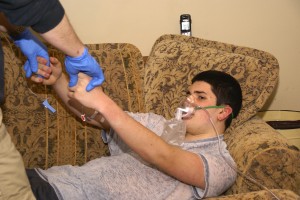Stroke in the Very Young: Big numbers for little people.

Already the leading cause of disability in the US, shocking new information shows incidents of ischemic stroke increasing more than 50% in children from 5 to 14 years old since 1995. In younger patients (under 45 years old) there have been similar leaps among all types of stroke. Despite these increases many of victims go undiagnosed due the mindset that they are simply “too young for stroke”. This program improves our understanding, awareness, assessment, care and coordination to help EMS provide better outcomes for all victims of cerebrovascular accidents. In this session we explain the startling reasons behind these dramatic numbers, what EMS can do about them and the diagnostic approach that catches what others often miss in newborns, very young children and younger victims of stroke.
Teaching Formats:
-Lecture
-Question and Answer
-Demonstration
Learning Objectives: Students will learn:
-The incidence rate of stroke in patients under 45, including pediatrics and neonates.
-The differences and similarities in presentation, assessment, treatment and outcome of young victims of stroke versus their older counterparts.
-Pathophysiology and differentiation of embolic, thrombotic, hemorrhagic strokes and stroke imitators.
-Stroke specific assessment techniques including Pre-hospital and In-Hospital Stroke Scales.
-The role of the EMS provider in the identification, assessment and care of pediatric cerebrovascular accidents.








